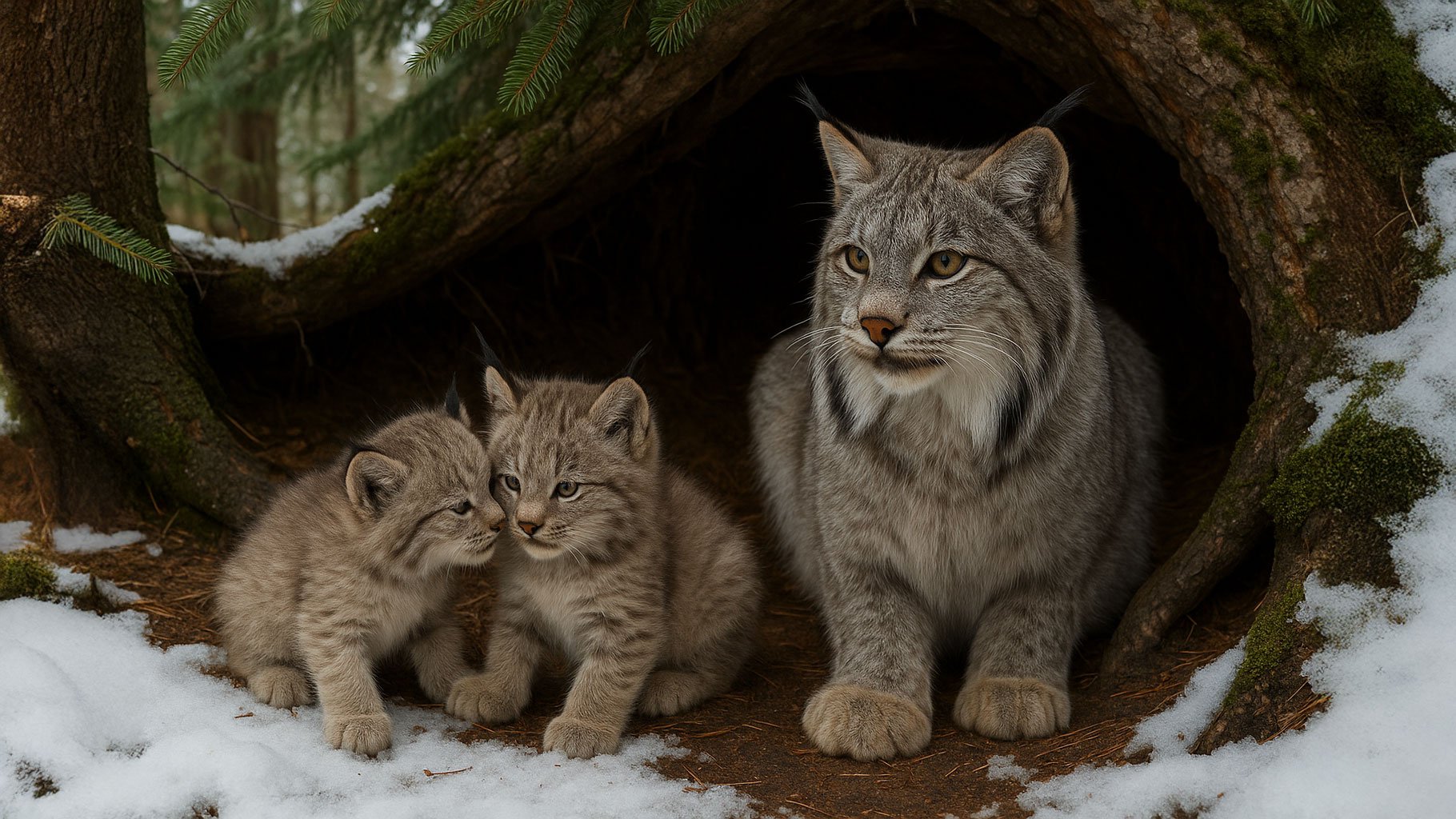Wápupxn Return: Lynx Kittens Signal a Wild Rebirth in Washington
In the rugged ridgelines of Ferry County, Washington, a quiet miracle unfolded—soft footfalls in the snow, playful mews in a hidden den, and eyes shining like moonlight from a nest of twigs and fur. For the first time in over forty years, Canada lynx kittens—wápupxn, as they are called in the Colville dialect—have been born in the Kettle Range. Their arrival is not just a birth, but a long-awaited rebirth—for a species, a habitat, and a people who never stopped believing.
A Historic Homecoming
The Colville Confederated Tribes’ Fish and Wildlife (CCT F&W) program announced the triumphant news in June 2025. The kittens, estimated to be only 2–3 weeks old, are the first confirmed births of Canada lynx in this region in over four decades. The Kettle Range, once their native domain, had fallen silent from their absence due to habitat loss, overtrapping, and a warming climate that shrank the snow-covered forests lynx depend on.
But through science, tradition, and tireless determination, the Colville Tribes turned silence into celebration.
“Welcome Home, Wápupxn”
The road to this moment was long and winding. It began on November 2, 2021, when the first male and female lynx were reintroduced to the Colville Reservation. These graceful, tufted-eared cats were more than conservation subjects—they were sacred beings returning to ancestral land. Equipped with GPS collars, they were tracked meticulously by biologists documenting every heartbeat of their rewilding journey: their range, their shelters, their struggles.
For nearly four years, the cats roamed, adjusted, and survived—testing the land and their place in it. Then came the whisper of fur in a den. The kittens were here.
“This momentous news is the culmination of years of work by a dedicated group of biologists committed to returning wápupxn to this area,” the CCT F&W program stated, honoring the team’s perseverance and the spirit of the lynx.
Guardians of the Wild
The Canada lynx (Lynx canadensis) is a ghost of the boreal forest—solitary, elusive, and exquisitely adapted to deep snow. Their oversized paws act like snowshoes. Their primary prey, the snowshoe hare, forms 75% of their diet. Without abundant snow or hares, the lynx cannot thrive.
This is why their return to the Kettle Range is more than symbolic—it is ecological affirmation. The presence of lynx kittens signals that the forest has healed enough to nourish new life. It also validates Indigenous leadership in species recovery, standing as a powerful testament to what can be achieved when conservation honors cultural heritage and scientific knowledge equally.
The Fight to Bring Them Back
Reintroducing a top predator is no small feat. The lynx rewilding project involved a symphony of agencies, scientists, and tribal elders. It meant restoring corridors, minimizing human interference, and educating the public on the importance of predator-prey balance. Every collar fitted, every camera trap checked, every paw print measured—was an act of hope.
And now, that hope has a heartbeat.
A Future Worth Protecting
The birth of these lynx kittens is not an end—it’s a beginning. They are fragile, vulnerable, and wholly dependent on continued stewardship. The threats that drove them away once—climate change, logging, roads, and indifference—still loom large.
But this time, the guardians of the Kettle Range are ready.
By supporting conservation organizations like Big Cat Rescue, individuals can directly empower projects like this—where science meets spirit and where wild animals are restored not to cages, but to the wild places they belong. Big Cat Rescue no longer houses big cats, but funds the very work that leads to moments like this: paws in the snow where none were expected.
Join the Wild Reawakening
We all have a role in writing nature’s comeback story. By choosing sustainable products, supporting habitat protections, and amplifying the work of Indigenous and local conservationists, we can ensure that the lynx kittens of today are the beginning of a thriving wild legacy.
Let this be the moment we celebrate not just a species returned, but a wild promise renewed.
Welcome home, wápupxn.
Read more: https://www.yoursourceone.com/columbia_basin/lynx-kittens-confirmed-in-north-central-washington-for-first-time-in-40-years/article_d80ab4ff-ff2a-42fd-a374-bf365844769d.html
